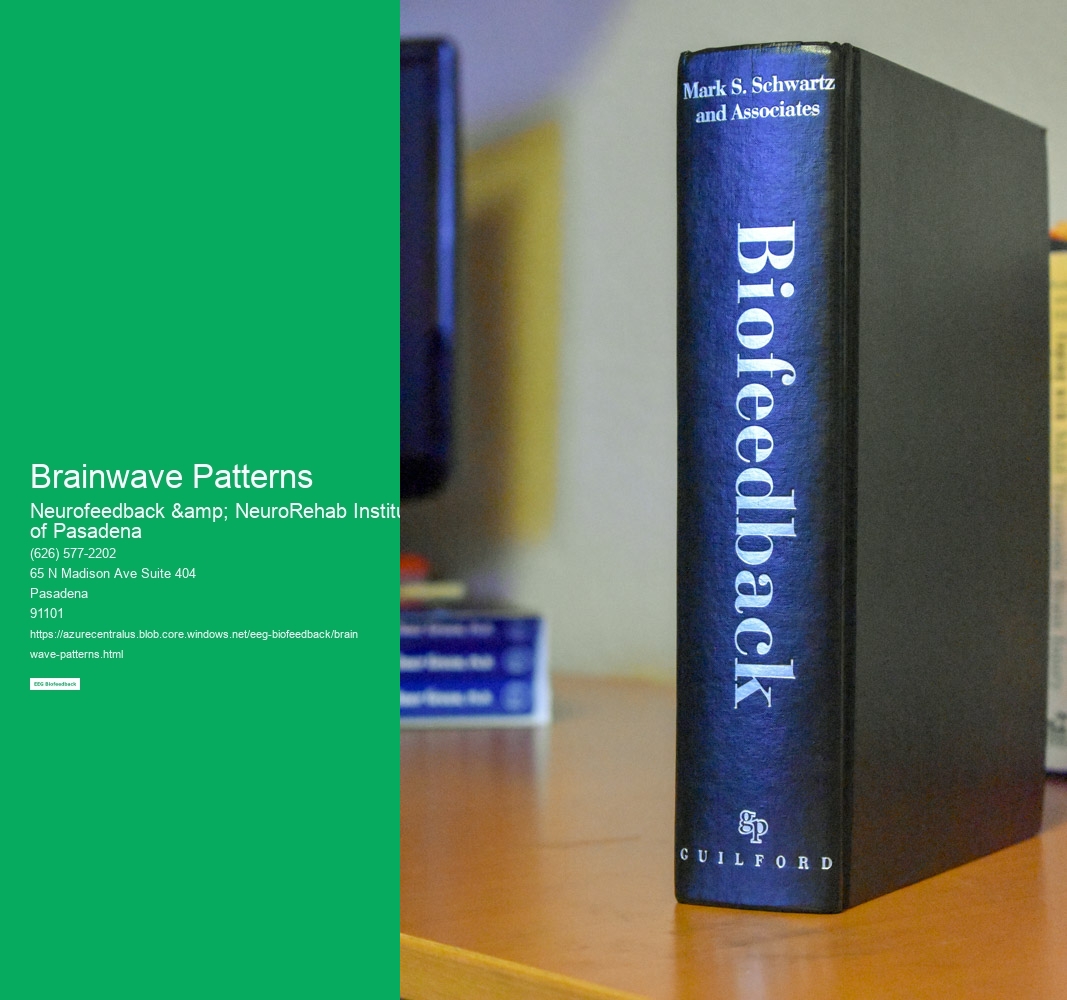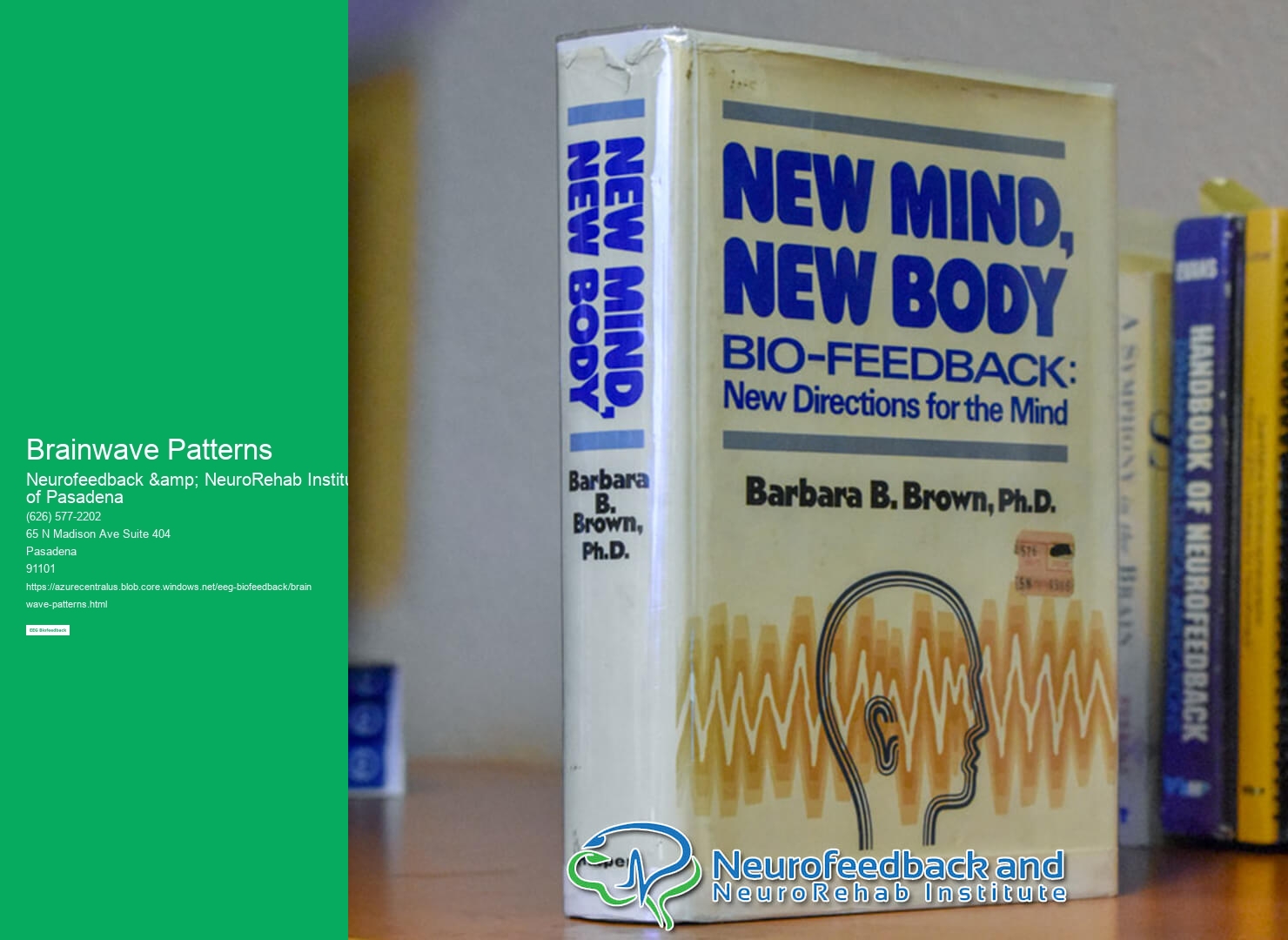

Brainwave patterns are categorized into different frequencies, each associated with specific mental states and activities. The main types of brainwave patterns include delta, theta, alpha, beta, and gamma waves. Delta waves have the slowest frequency, ranging from 0.5 to 4 Hz, and are typically observed during deep sleep. Theta waves, with a frequency of 4 to 8 Hz, are associated with deep relaxation, meditation, and accessing the subconscious mind. Alpha waves, ranging from 8 to 13 Hz, are present when a person is in a relaxed and calm state, and they are also associated with increased creativity. Beta waves, with a frequency of 13 to 30 Hz, are linked to focused attention, alertness, and problem-solving. Lastly, gamma waves, ranging from 30 to 100 Hz, are associated with higher cognitive functions, peak performance, and heightened perception.
Alpha brainwaves play a significant role in promoting relaxation and enhancing creativity. When a person is in a relaxed state, their brain produces alpha waves, which have a frequency of 8 to 13 Hz. These brainwaves are associated with a calm and peaceful mental state, reducing stress and anxiety. Alpha waves also facilitate creative thinking and problem-solving by promoting a relaxed and open mindset. When alpha waves are dominant, individuals may experience increased inspiration, improved focus, and enhanced artistic expression. Therefore, cultivating alpha brainwaves through relaxation techniques such as meditation or listening to calming music can help induce a state of relaxation and boost creativity.
Theta brainwaves, with a frequency of 4 to 8 Hz, are closely linked to meditation and accessing the subconscious mind. When a person enters a deep meditative state, their brain produces theta waves. These brainwaves are associated with a state of deep relaxation, heightened intuition, and increased access to the subconscious mind. Theta waves can facilitate a deeper connection with one's inner self, allowing for self-reflection, emotional healing, and personal growth. Additionally, theta waves are also present during REM sleep, which is associated with vivid dreaming and memory consolidation. By intentionally inducing theta brainwaves through meditation or other relaxation techniques, individuals can enhance their meditation practice and tap into the power of their subconscious mind.

Beta brainwaves, with a frequency of 13 to 30 Hz, are crucial for focus and alertness. When a person is engaged in active thinking, problem-solving, or focused attention, their brain produces beta waves. These brainwaves are associated with a state of heightened mental activity and cognitive processing. Beta waves help individuals stay alert, concentrate, and maintain a state of focused attention. They are particularly important in tasks that require logical reasoning, critical thinking, and decision-making. However, excessive beta activity can lead to stress, anxiety, and an overactive mind. Therefore, it is essential to strike a balance between beta waves and other brainwave frequencies to optimize focus and alertness while maintaining mental well-being.
Gamma brainwaves, with a frequency of 30 to 100 Hz, are associated with higher cognitive functions and peak performance. These brainwaves are observed during moments of intense concentration, deep insight, and heightened perception. Gamma waves are believed to facilitate information processing, memory formation, and integration of different brain regions. They are associated with enhanced learning, problem-solving, and creative thinking. Gamma waves are often observed in individuals who excel in their fields, such as athletes, musicians, and experienced meditators. By cultivating gamma brainwaves through activities like meditation, mindfulness, or cognitive training, individuals can enhance their cognitive abilities and reach a state of peak performance.


Sleep and deep relaxation are associated with specific brainwave patterns. During sleep, the brain transitions through different stages, each characterized by distinct brainwave frequencies. In the initial stages of sleep, the brain produces alpha and theta waves as it relaxes and prepares for deeper sleep. As sleep deepens, delta waves, with a frequency of 0.5 to 4 Hz, become dominant. Delta waves are associated with deep sleep, physical restoration, and the release of growth hormones. Deep relaxation, similar to sleep, is also characterized by an increase in alpha and theta waves. These brainwave patterns promote relaxation, rejuvenation, and overall well-being. By understanding and optimizing these brainwave patterns, individuals can improve the quality of their sleep and enhance their ability to relax deeply.
Brainwave entrainment techniques can be used to influence and optimize brainwave patterns. Brainwave entrainment refers to the process of synchronizing brainwave frequencies with external stimuli, such as sound or light, to induce desired mental states. For example, binaural beats, which involve listening to two slightly different frequencies in each ear, can help entrain the brain to specific frequencies. By listening to binaural beats in the alpha or theta range, individuals can induce a state of relaxation, meditation, or creativity. Similarly, visual stimulation, such as flickering lights, can entrain the brain to specific frequencies and promote desired mental states. Brainwave entrainment techniques can be used as a tool for relaxation, meditation, focus, and overall mental well-being. However, it is important to note that individual responses to brainwave entrainment may vary, and it is advisable to consult with a healthcare professional before incorporating these techniques into one's routine.

Heart rate variability (HRV) and EEG biofeedback are two distinct but interconnected aspects of biofeedback therapy. HRV refers to the variation in time intervals between consecutive heartbeats, which is regulated by the autonomic nervous system. EEG biofeedback, on the other hand, involves the measurement and training of brainwave activity using electroencephalography. While HRV primarily focuses on the cardiovascular system, EEG biofeedback targets the central nervous system. However, there is a significant relationship between the two. Research has shown that HRV can be influenced by changes in brainwave patterns, and vice versa. By using EEG biofeedback to train specific brainwave frequencies, individuals can potentially improve their HRV and overall autonomic nervous system function. This integrated approach allows for a more comprehensive understanding and treatment of various physiological and psychological conditions.
Yes, EEG biofeedback can be used in conjunction with other therapeutic interventions. EEG biofeedback, also known as neurofeedback, is a non-invasive technique that measures brainwave activity and provides real-time feedback to individuals. It has been found to be effective in treating a variety of conditions, such as attention deficit hyperactivity disorder (ADHD), anxiety, depression, and post-traumatic stress disorder (PTSD). When used in conjunction with other therapeutic interventions, such as cognitive-behavioral therapy (CBT) or medication, EEG biofeedback can enhance the effectiveness of treatment. By providing individuals with information about their brainwave patterns and teaching them how to regulate their brain activity, EEG biofeedback can help individuals gain better control over their symptoms and improve their overall well-being.
Yes, EEG biofeedback can be used as a therapeutic approach to address symptoms of post-traumatic stress disorder (PTSD). EEG biofeedback, also known as neurofeedback, is a non-invasive technique that involves monitoring and training brainwave activity. By providing real-time feedback on brainwave patterns, individuals with PTSD can learn to regulate their brain activity and reduce symptoms such as anxiety, hyperarousal, and intrusive thoughts. EEG biofeedback can help individuals with PTSD gain better control over their physiological responses and improve their overall well-being. Additionally, this approach can be used in conjunction with other therapeutic interventions to enhance the effectiveness of treatment for PTSD.
Biofeedback neurostimulation and traditional EEG biofeedback are both forms of biofeedback therapy that aim to improve brain function and promote overall well-being. However, there are some key differences between the two approaches. Biofeedback neurostimulation involves the use of electrical stimulation to directly modulate brain activity and promote desired changes in brain function. This can be achieved through techniques such as transcranial direct current stimulation (tDCS) or transcranial magnetic stimulation (TMS). In contrast, traditional EEG biofeedback, also known as neurofeedback, focuses on training individuals to self-regulate their brain activity by providing real-time feedback on their brainwave patterns. This is typically done by placing electrodes on the scalp to measure brainwave activity and providing auditory or visual feedback based on specific brainwave frequencies. While both approaches have been shown to be effective in treating various conditions, biofeedback neurostimulation offers a more direct and targeted approach to modulating brain function, while traditional EEG biofeedback focuses on training individuals to self-regulate their brain activity.
Practitioners assess the long-term effects of EEG biofeedback interventions through a variety of methods. One common approach is to conduct follow-up assessments at regular intervals after the intervention has ended, such as at 3 months, 6 months, and 1 year. These assessments may involve administering standardized tests or questionnaires to measure changes in cognitive functioning, emotional well-being, and overall quality of life. Additionally, practitioners may use neuroimaging techniques, such as functional magnetic resonance imaging (fMRI), to examine changes in brain activity patterns over time. Longitudinal studies that track participants over an extended period can provide valuable insights into the sustained effects of EEG biofeedback interventions. By analyzing data from multiple assessments and considering factors such as treatment adherence and individual differences, practitioners can gain a comprehensive understanding of the long-term benefits of this intervention.
Cognitive training with neurofeedback plays a crucial role in EEG biofeedback programs. Neurofeedback, also known as EEG biofeedback, is a non-invasive technique that uses real-time feedback of brain activity to train individuals to self-regulate their brain function. Cognitive training, on the other hand, focuses on improving cognitive abilities such as attention, memory, and executive functions. When combined, these two approaches create a powerful intervention that targets both the underlying brain dysregulation and the cognitive deficits associated with various neurological and psychiatric conditions. By providing individuals with real-time feedback on their brain activity, neurofeedback allows them to learn how to modulate their brainwaves and achieve a more optimal state of functioning. This, in turn, can lead to improvements in cognitive performance and overall well-being. Moreover, cognitive training exercises can be integrated into the neurofeedback sessions to further enhance the training effects. These exercises can target specific cognitive domains that are relevant to the individual's needs, such as working memory or attention. By combining cognitive training with neurofeedback, EEG biofeedback programs can provide a comprehensive and personalized approach to brain training and rehabilitation.
Yes, there are specific EEG biofeedback protocols that can be used to address executive function challenges. Executive function refers to a set of cognitive processes that are responsible for planning, organizing, and regulating behavior. EEG biofeedback, also known as neurofeedback, is a non-invasive technique that uses real-time feedback of brain activity to train individuals to self-regulate their brainwaves. In the context of executive function challenges, specific EEG biofeedback protocols may focus on training individuals to increase their ability to sustain attention, inhibit impulsive behaviors, and improve working memory. These protocols typically involve training individuals to increase the amplitude of specific brainwave frequencies, such as beta waves, which are associated with focused attention and cognitive control. Additionally, protocols may also involve training individuals to decrease the amplitude of brainwave frequencies, such as theta waves, which are associated with distractibility and impulsivity. By targeting these specific brainwave frequencies, EEG biofeedback can help individuals improve their executive function skills and better manage their cognitive processes.